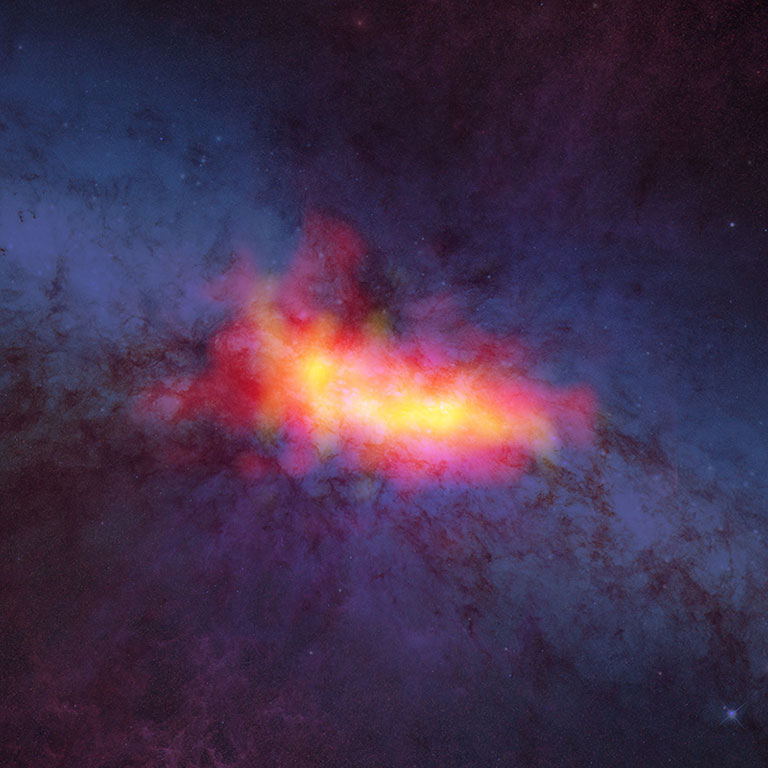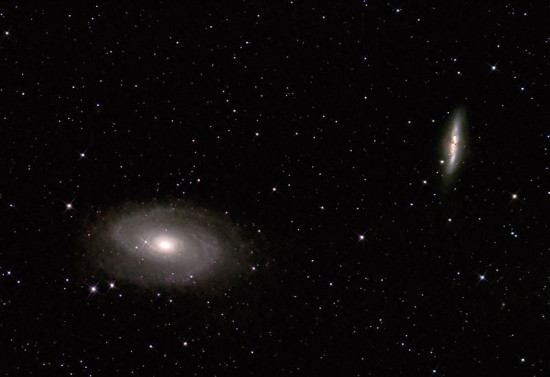
Astronomers released this photo yesterday (December 9, 2013) of M82, one of the best known galaxies to both amateur and professional observers. Amateurs know it as a member of a famous galaxy pair in the vicinity of the famous Big Dipper asterism. The pros study it mainly because M82 is a starburst galaxy, currently undergoing a very high rate of star formation. M82 is thought to be some five times brighter than our Milky Way galaxy and 100 times brighter than our galaxy’s center, and this brightness is thought to result from the rapid rate of star formation. Astronomers used new equipment on the National Science Foundation’s Robert C. Byrd Green Bank Telescope (GBT) to obtain this photo, and they say some details in the photo have never been observed previously. For example, streamers of material (in red) are seen fleeing the disk of the galaxy, while concentrations of dense molecular gas (yellow and red) surround pockets of intense star formation.
The astronomers credit this photo and the new data about M82 to GBT’s newly equipped “W-Band” receiver, capable of detecting the millimeter wavelength light that is emitted by molecular gas. Amanda Kepley is a post-doctoral fellow at the National Radio Astronomy Observatory (NRAO) in Green Bank, West Virginia, and lead author on a paper accepted for publication in the Astrophysical Journal Letters. She said in a press release:
With this new vision, we were able to look at M82 to explore how the distribution of molecular gas in the galaxy corresponded to areas of intense star formation. Having this new capability may help us understand why stars form where they do.

Most starburst galaxies are either merging or being affected by other galaxies; M82 is being affected by the nearby galaxy M81, with which it forms a beautiful pair visible in small telescopes.
M81 and M82 are located about 12 million light-years away.
Click here to read more about this new photo of M82, from NRAO.
Read more: Colliding galaxies become hotbeds of star formation











